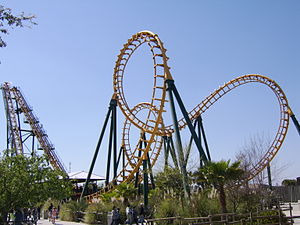 For many, losing weight is a roller coaster experience. They lose it, they regain it, they lose it, they regain it. People start looking for quick fix solutions. Many people never succeed in losing weight. Worse yet, many become obese without ever really understanding why.
For many, losing weight is a roller coaster experience. They lose it, they regain it, they lose it, they regain it. People start looking for quick fix solutions. Many people never succeed in losing weight. Worse yet, many become obese without ever really understanding why.
We now have boot camps and countless products that are “the best solution to losing weight”. And then we are exposed to TV shows like “The Biggest Loser”, with obese participants being yelled at by personal trainers who have almost militaristic and fanatical approaches to exercise.
Do these type of fanatical approaches just attempt to sell more product and prey on an unsuspecting, desperate, and highly fearful public? Does effective weight loss really require such drastic measures?
Effective weight loss has, at it’s core, a very simple premise. It is a simple math equation:
Output > Input = Weight Loss
If you burn more calories than you consume, you will lose weight. With that in mind, there are many issues that creep into play that are limiting factors to attaining the desired results.
Let’s start with Output. There are many ways to burn more calories. Get up off the couch. Move on the planet. But just doing more and more long, slow activity won’t get it all done. There needs to be some level of intensity of exercise. Sure, low intensity activity will bump up our metabolic rate, but then it returns to normal very shortly after the activity is finished. If the intensity level is higher, even if performed in short intervals, the metabolic rate will stay elevated long after the exercise is finished. You are then, in effect, burning more calories even at rest.
The same concept is true with strength training. A gain in lean muscle mass is a good thing, as compared to the same mass of fat. Lean muscle burns calories at rest – fat does not. That is why strength training should be an integral part of a weight loss plan.
Input comes down to some basic principles. Why do you eat? You can eat for fuel, or you can eat for a plethora of other reasons. Food is a means of control for many. If a person can understand the reasons why they eat – to fuel, or to self-medicate and self-sabotage, then they can address those issues in an appropriate way. If there are self-image issues at stake, simply “eating less” won’t solve the problem – hence another reason for the roller coaster ride.
If you are eating for fuel, keep one thing in mind: portion sizes in this country are huge. What many think is one portion may in fact be 2 or 3 based on the caloric content.
Nobody is saying that you can’t eat for enjoyment and pleasure, but just know what it is you are sticking in your mouth and the reasons why.
Weight loss is a topic prone to a great deal of marketing and “get thin quick” schemes with health and health care providers. Shows like “The Biggest Loser”, though good in concept, probably foster the wrong set of values. I remember an episode in which the participants, many still morbidly obese, were told they were going to run a marathon in six weeks. Insane! This has no basis whatsoever in smart approaches to health or injury prevention.
People need to take ownership of their issues. They need to fully assess why they eat, and then put in the appropriate strategies to allow them to change their lifestyle – not just “lose weight”. Too many people simply have not made the choice to own good habits, to be self-responsible, and to address self image issues. This is as much an issue “between the ears” as it is “getting physically active”. Long-term solutions to this problem in our country will need to address both.
Photo credits: Wikipedia

 "Running Injuries: Etiology And Recovery- Based Treatment" (co-author Bridget Clark, PT) appears in the third edition and fourth editions of "Clinical Orthopaedic Rehabilitation: A Team Approach" by Charles Giangarra, MD and Robert C. Manske, PT.
"Running Injuries: Etiology And Recovery- Based Treatment" (co-author Bridget Clark, PT) appears in the third edition and fourth editions of "Clinical Orthopaedic Rehabilitation: A Team Approach" by Charles Giangarra, MD and Robert C. Manske, PT.
 Allan Besselink, PT, DPT, Ph.D., Dip.MDT has a unique voice in the world of sports, education, and health care. Read more about Allan here.
Allan Besselink, PT, DPT, Ph.D., Dip.MDT has a unique voice in the world of sports, education, and health care. Read more about Allan here.
 Top 5 finalist in three categories: "Best Overall Blog", "Best PT Blog" and "Best Advocacy Blog".
Top 5 finalist in three categories: "Best Overall Blog", "Best PT Blog" and "Best Advocacy Blog".